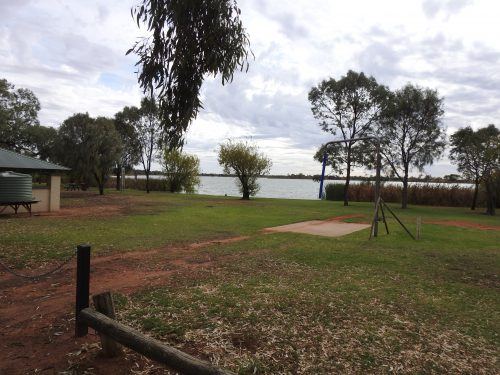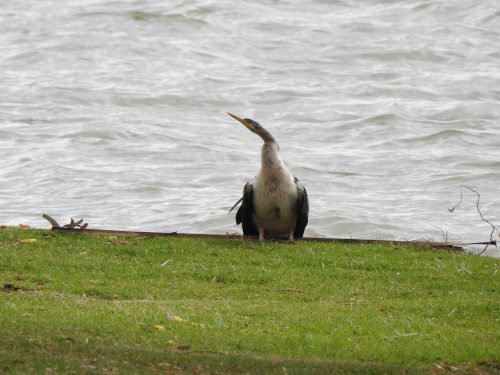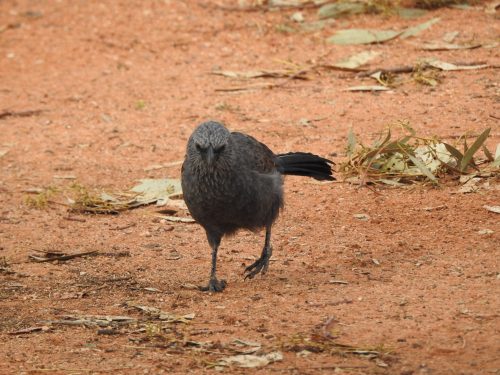Rescue of the ten little ducklings
From time to time we have Pacific Black Ducks visiting our swimming pool. Sometimes a solitary bird, more often two and sometimes three. They might hang around for a few days and then we won’t see them for weeks or months.
Several years ago we had a mother duck bring about five or six ducklings to the pool. On that occasion we found the ducklings too late. Because they had been in the water and couldn’t get out, they all died, even though we tried to care for them. They probably were far too exhausted or possibly became too cold.
On Friday we had another family of ducks visit the pool. We are in severe water restrictions due to the drought at present and I’ve been reluctant to fill the pool, so the water level was down quite a long way compared to its normal level. I haven’t bothered to begin cleaning it for summer either, but that is another story. Once again I was fearful of losing all ten little ducklings.
My dear wife came to the rescue with a brilliant device for rescuing the ducklings. She found a length of chicken netting with a wooden frame around it. It was about a square metre in size. This was placed like a ramp from the water to the edge of the pool. She then draped an old towel over the netting and anchored the whole thing with several bricks. Within the hour the whole family found the ramp and they were on their way, hopefully down to the river. Now the River Murray is about four kilometres away, so that is a long march for a family of little ducklings. A search of the property later found not sign of them, so I am assuming they are well on their way to safety on the river.
Further reading:
An Ugly Duckling
On my writing blog I have been writing about the meanings and origins of various idioms we use in everyday speech and writing. Many of these expressions relate to birds in some way. Here is another of them.
This week’s idiom: ‘An ugly duckling.’
Meaning:
An awkward, ungainly, unattractive child who develops into a graceful, beautiful adult is said to be an ugly duckling.
Origins:
The expression comes from the Hans Christian Andersen story called The Ugly Duckling. It was first published in 1843 and is widely regarded as a classic children’s story.
A mother duck hatches her brood only to find one duckling larger and uglier than the rest. He was very much a misfit and soon received much harassment from the other barnyard residents who eventually drive him away to fend for himself. After a struggle to survive the ugly ‘duckling’ develops into a beautiful swan.
The moral of the story is that inner beauty will always overshadow outer appearance. Interestingly, the Wikipedia article goes into a deeper analysis than I have here, postulating that this story is possibly a metaphor for Andersen’s own unhappy life.
Example:
As a child she was such an ugly duckling, but look at Sarah’s beauty and grace now.
A Sitting Duck
This week’s idiom: “A sitting duck.”
Meaning:
Someone or something that is ‘a sitting duck’ is an easy to hit target. Someone who is a ‘sitting duck’ is open to an easy physical or verbal attack.
Origin:
This expression quite obviously comes from hunters, and duck shooters in particular. A sitting duck, on merely bobbing on the surface of the water, as opposed to one swimming, diving, dabbling or flying, is an easy target for the shooter.
Example:
Left alone on stage, he was completely at the mercy of the angry crowd. James felt like a sitting duck.
Disclaimer 1: The writer of this blog in no way endorses duck shooting.
Disclaimer 2: No ducks, nor any other birds, were harmed in taking the photo below.
Please note: the photo below is of a STANDING duck. I don’t have a photo of a sitting duck – yet.
UPDATE: I should point out the the bird shown in the photo is an Australian Wood Duck. The Wood Duck found in North America is quite a different species.
An early morning surprise
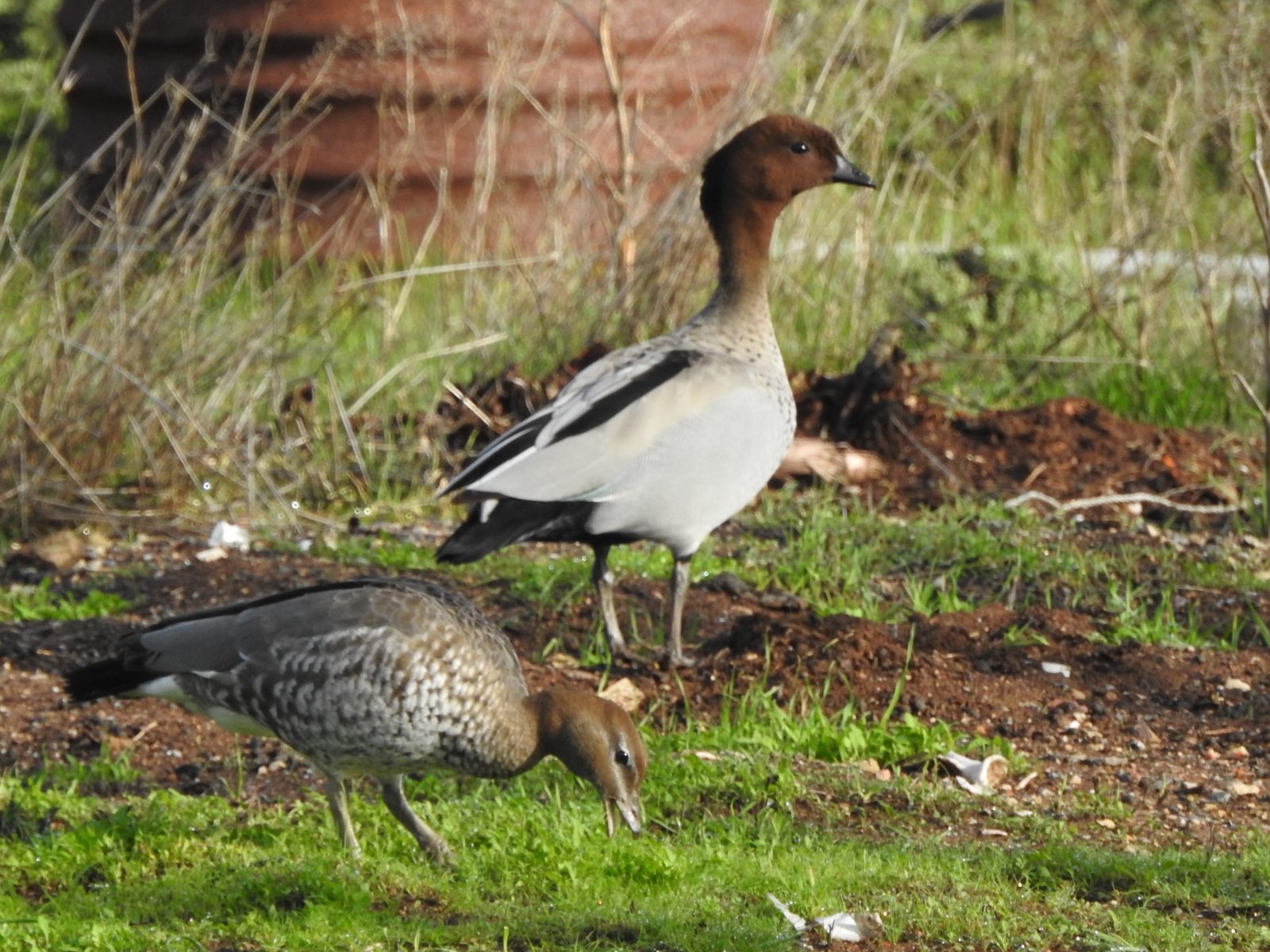
I had a pleasant surprise this morning. As I opened the curtains in my bedroom I saw two Australian Wood Ducks feeding on the grass in my garden. I quickly grabbed my camera and moved outside and a little closer to them, hoping to get some good photos. They were very cooperative and stayed grazing on the grass for a few minutes before flying off. I have included below a selection of the photos I took while they lingered there nearby.
New sighting
Australian Wood Ducks are quite common in the Murray Bridge area in South Australia. They can often be seen along and near the banks of the Murray River here, as well as in pastures some distance from water. In the Adelaide Hills to the west, and in other parts of the state, this species can often be observed in grassy pastures and around farm dams.
What is unusual about my sighting this morning is that I haven’t recorded Australian Wood Ducks on my property for the last 15 years. In fact, I cannot recall ever seeing them here on my 5-acre block in over 35 years that I have lived here. My database of records only goes back to sightings since 2005. I still have many sightings from earlier years to enter on my database so I am trusting my memory on this one. And my memory is not as good as it used to be. (Sigh.)
From time to time I see Pacific Black Ducks flying overhead. Over ten years ago I also took photos of a mother Pacific Black Duck with her ducklings swimming in my swimming pool. This happened a number of times but now that I have a cover over the pool, they don’t seem to be interested in coming down for a swim.
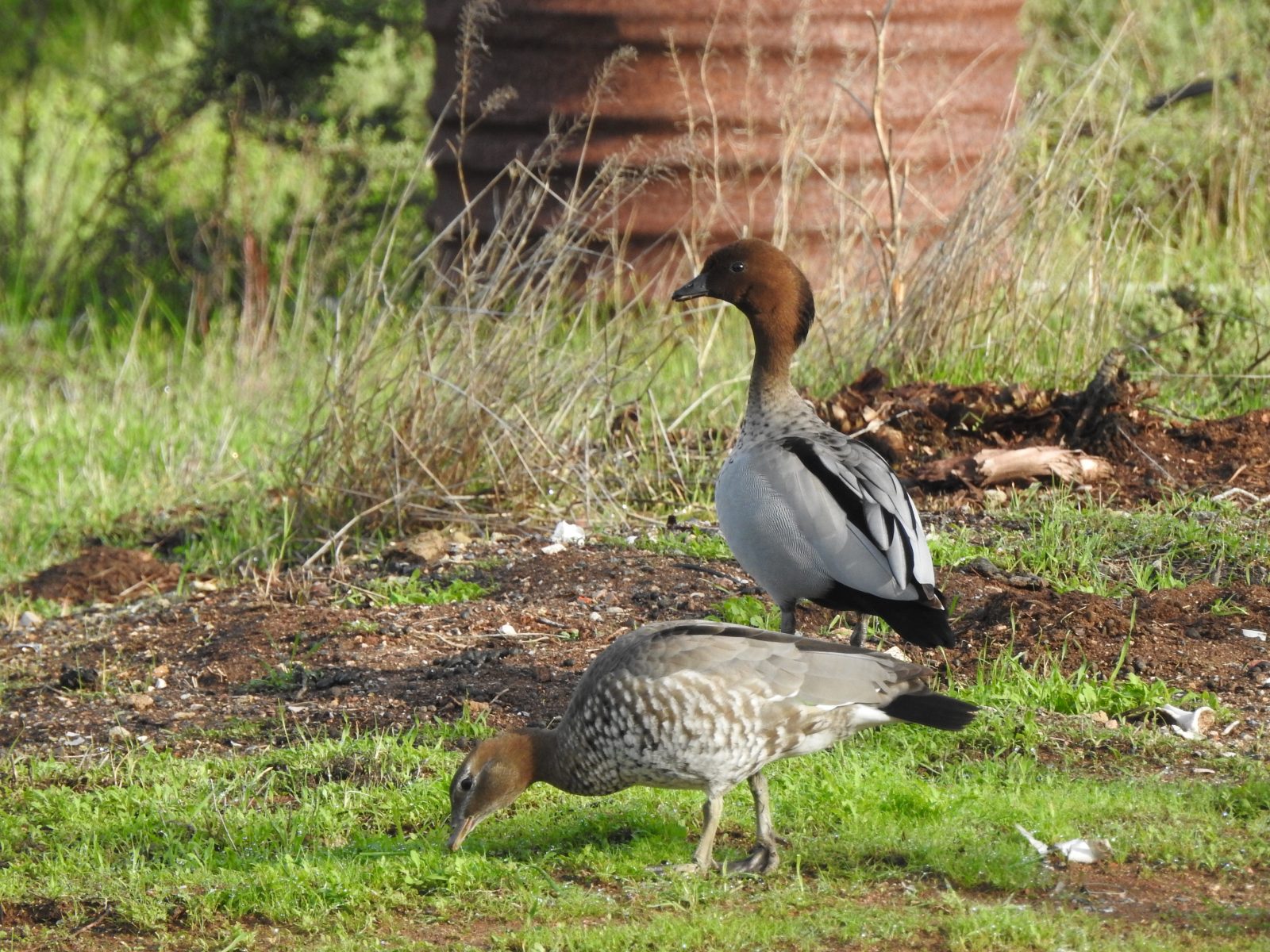
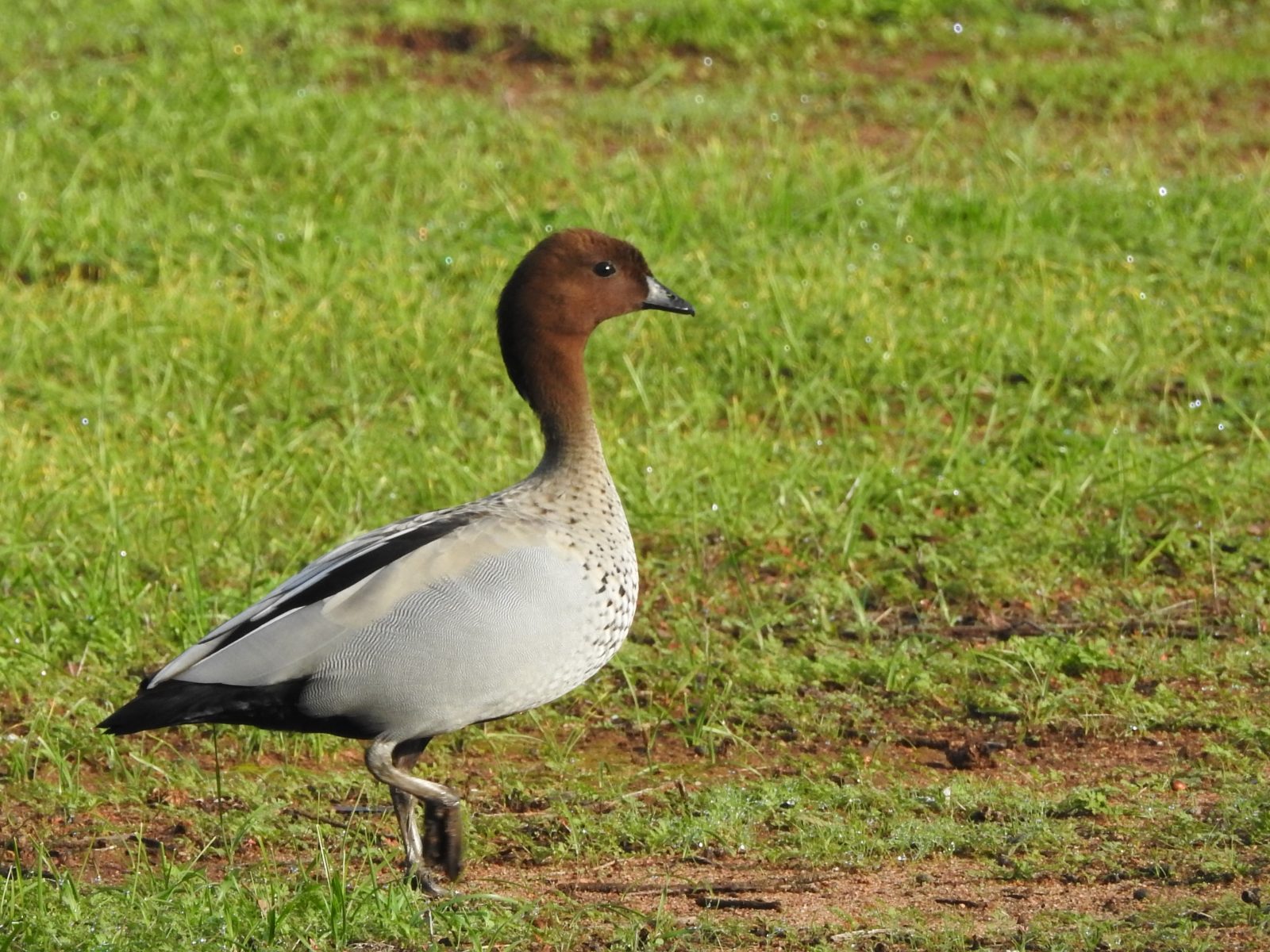
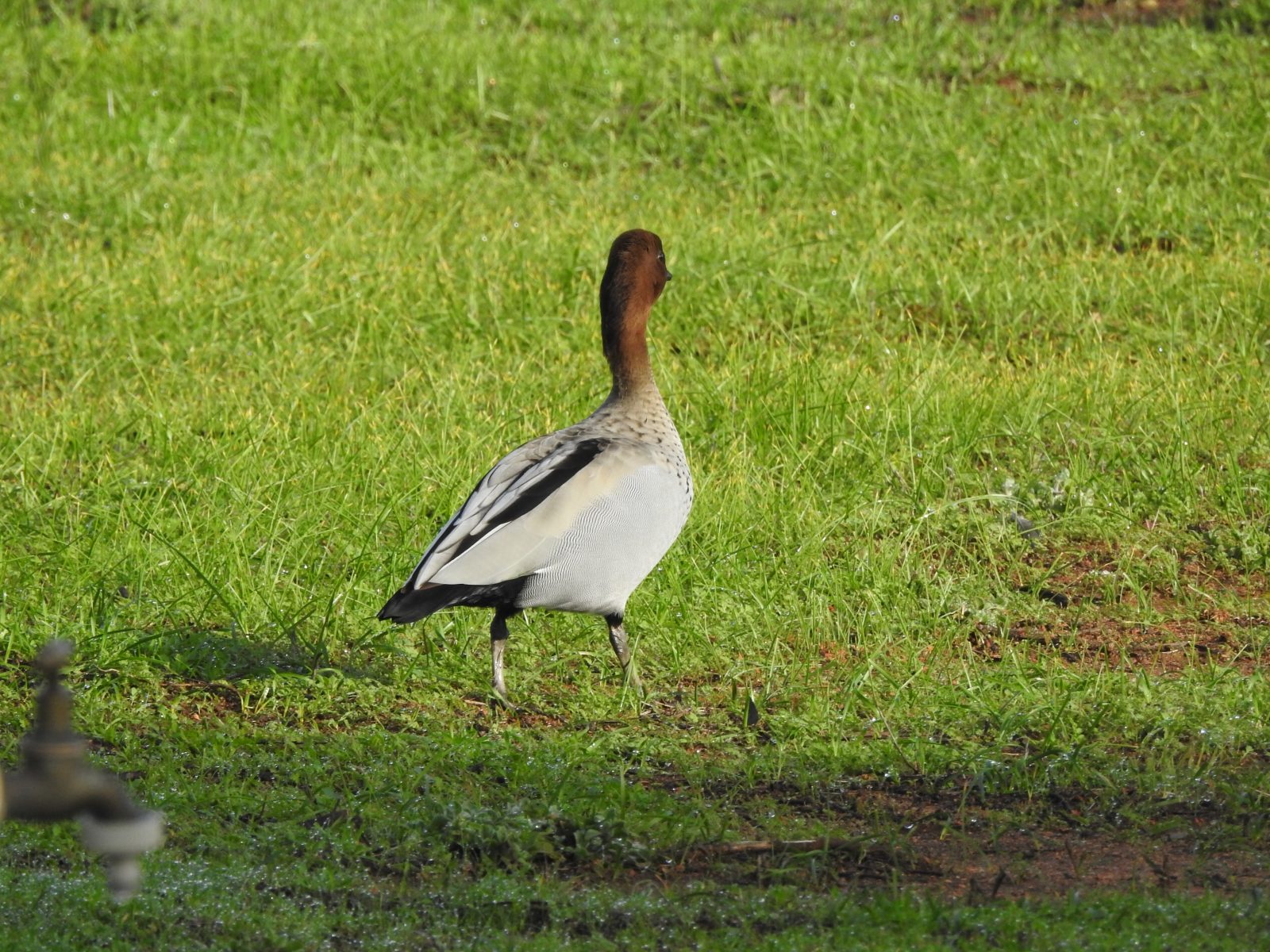
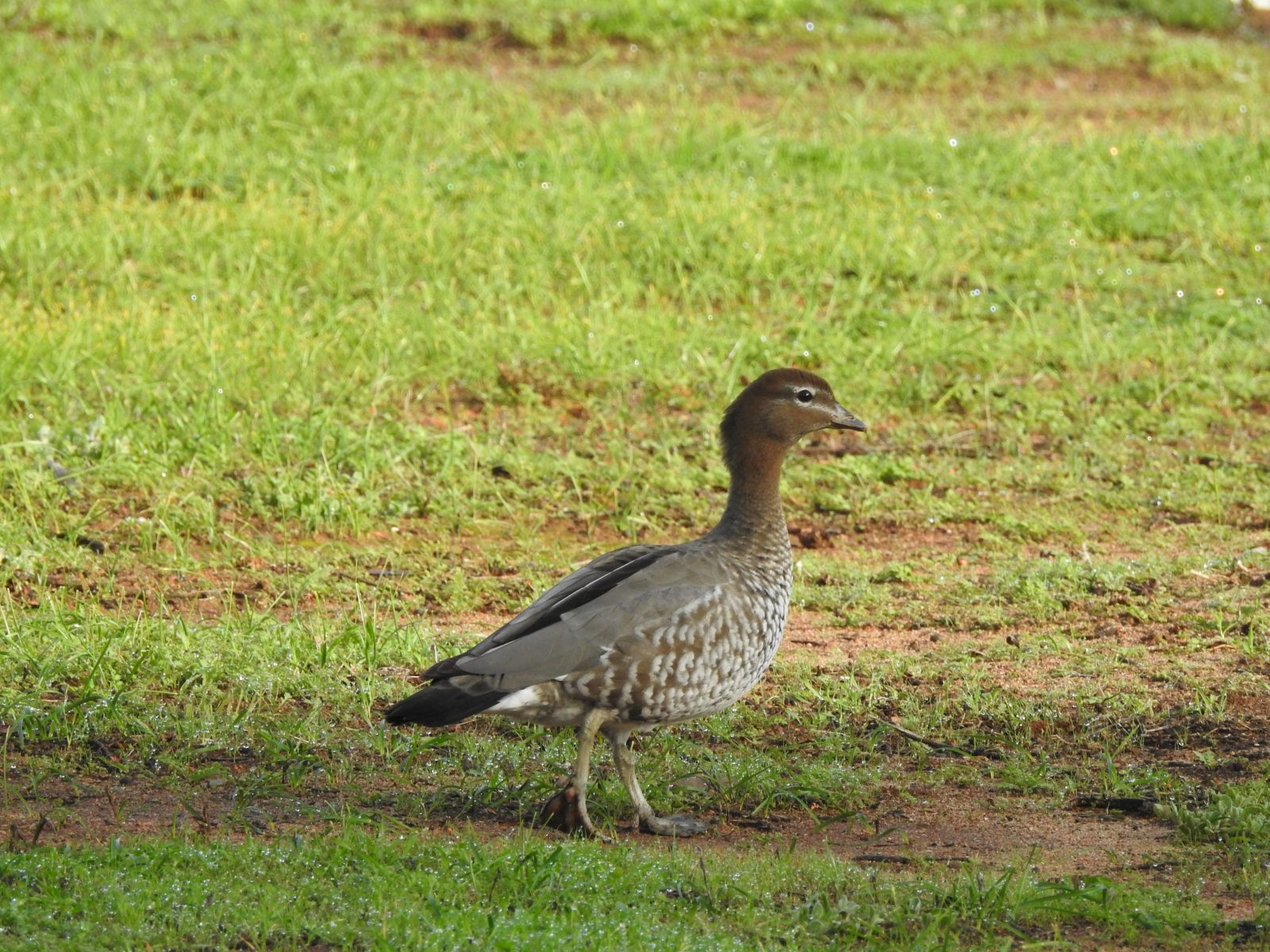
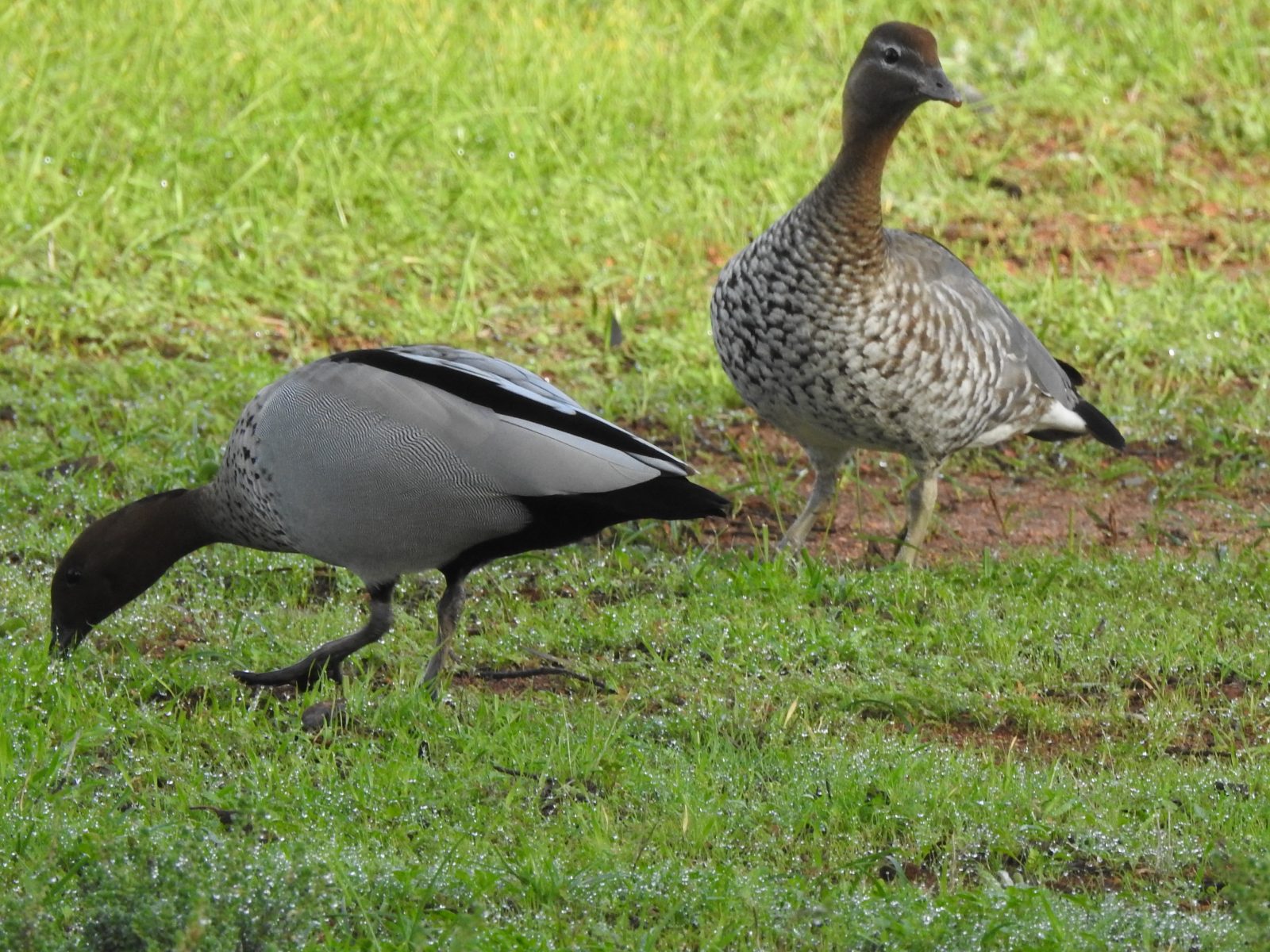
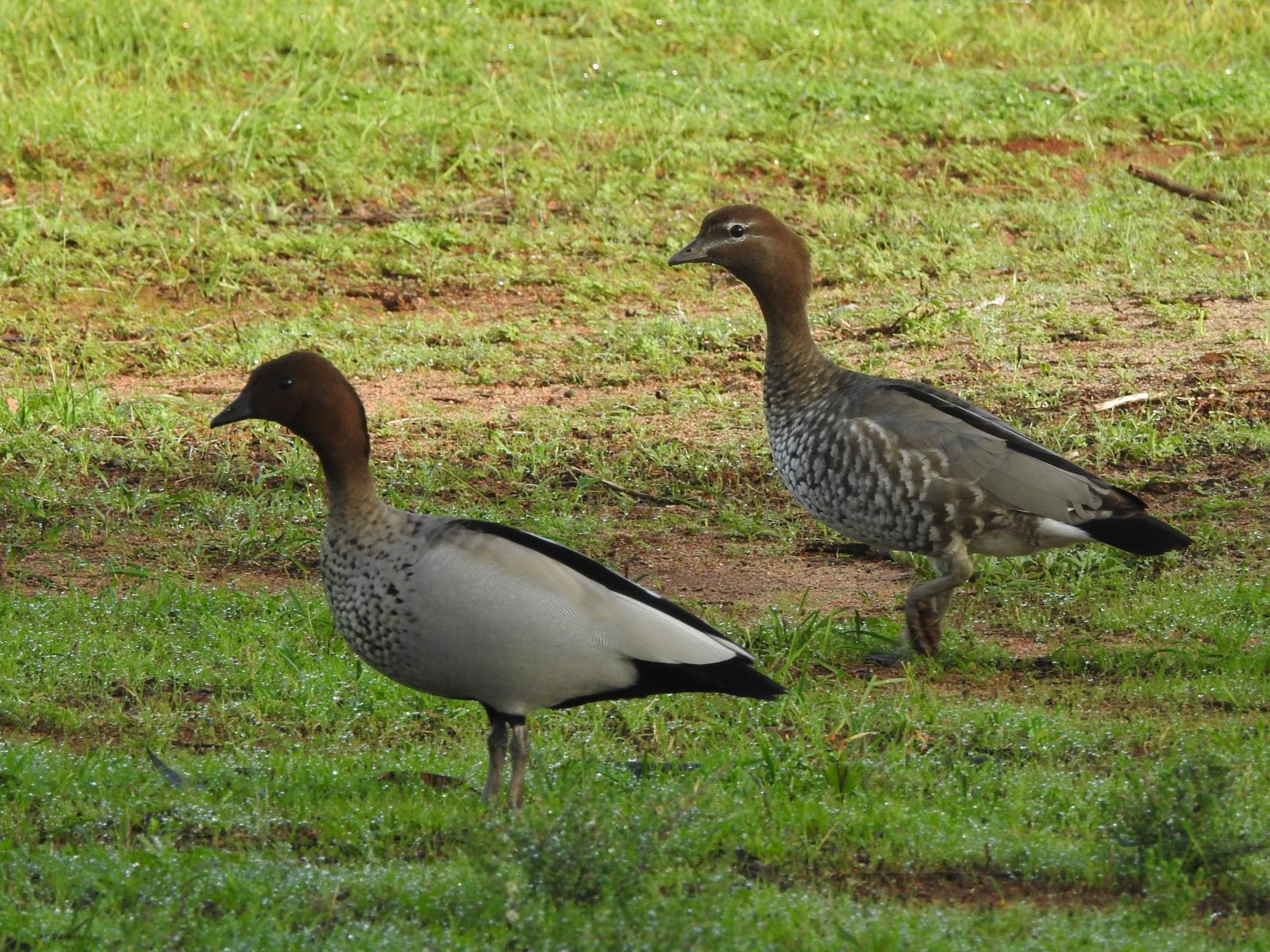
Birding at Lake Cullulleraine in northern Victoria
In recent days I have been on the road again. This is my first major trip since October of 2018. I was on my way to Sydney to stay with family but I decided to take a completely different route this time. Normally I travel almost due east, travelling through Pinneroo, Ouyen, Balranald, Hay, Wagga Wagga and Goulburn. On this trip, I headed north from my home in Murray Bridge to Blanchetown where I crossed the Murray River.
I headed on east past Waikerie, Berri, Renmark and on towards Mildura in north-west Victoria. By the time I reached the small community of Lake Cullulleraine, it was time for a break and for lunch. Whenever I am travelling, I usually look for a good birding spot to add to my list of birds seen. This lake and the area nearby have always proved to be a satisfactory birding spot. In fact, many years ago my wife and I spent a lovely week in our old caravan here.
The lake is filled from the nearby Murray River and the whole river-lake complex is a rewarding birding area. Added to that is the farming area surrounding the lake which adds a different birding environment. Where the land is not used for agriculture, the remnant mallee scrublands provide birding experiences of yet another type.
As soon as I pulled up in the car park I saw a Darter drying its wings though when I took the photo above it had closed its wings for a moment. As I was having my lunch I listed all of the other birds observed around the picnic area or on the nearby lake. The following is a list of the species seen:
- Darter
- Australian Raven
- Purple Swamphen
- Australian Wood Duck (about 60)
- Black-tailed Native-hen
- Noisy Miner
- Magpie-lark
- Apostlebird (photo below)
- Willie Wagtail
- Little Corella (about 30)
- Crested Pigeon
- Australian Pelican (one only flying overhead)
- Eurasian Coot
- Australian Magpie
- Pied Butcherbird
- Masked Lapwing
- Red Rumped Parrot
It is not a long list but it was good to get started on listing the birds seen on my trip through South Australia, New South Wales and Victoria over the next few weeks. I will write about the birds I see on my journeys in the coming posts on this site.
As I prepared to leave, a small family of Apostlebirds came meandering around my car enabling me to get some good photos. They were constantly calling to each other while they scratched at the ground seeking out a few items to eat for their lunch.
Good birding,
Trevor




